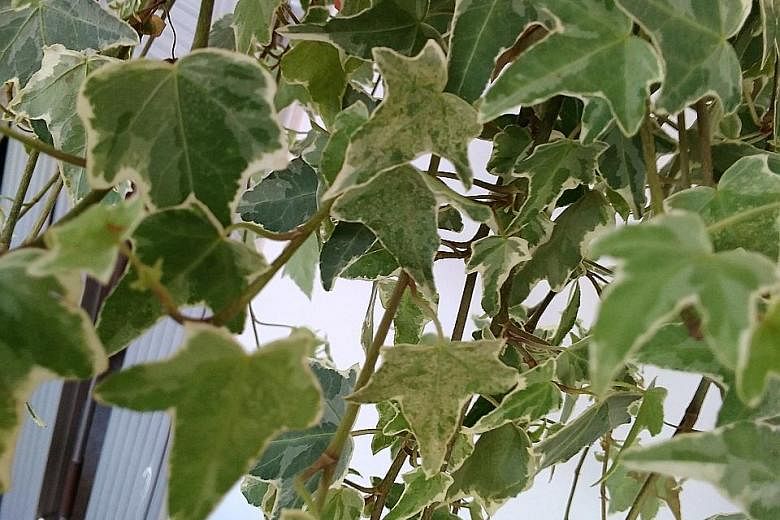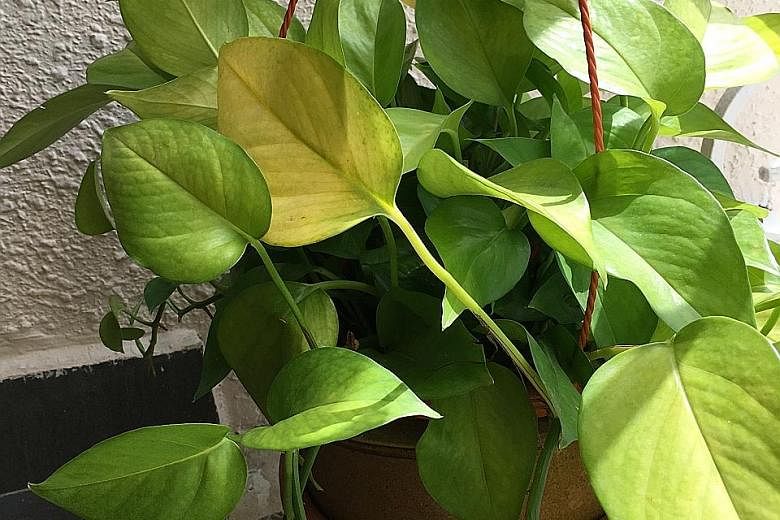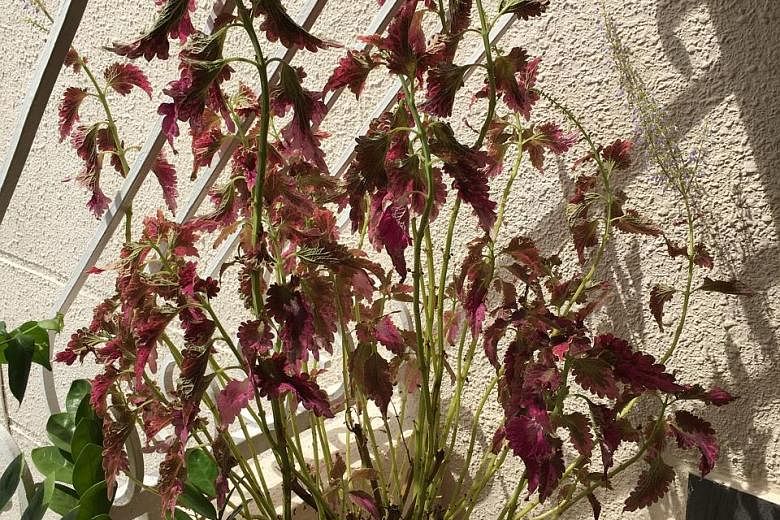Eat only young fruit pods of Sword bean
My son brought home a large seed and planted it. The first leaves were heart-shaped. As the plant grew into a vine, it started sprouting clusters of light purple flowers and 25cm-long bean pods. What is this plant and are its beans or seeds edible?
Ang Li Ming
The plant is commonly known as the Sword bean. Its botanical name is Canavalia gladiata.
In Singapore, there are two types of Sword bean plants - they have either pink or white seeds.
The young fruit pods are sometimes harvested and eaten as a vegetable.
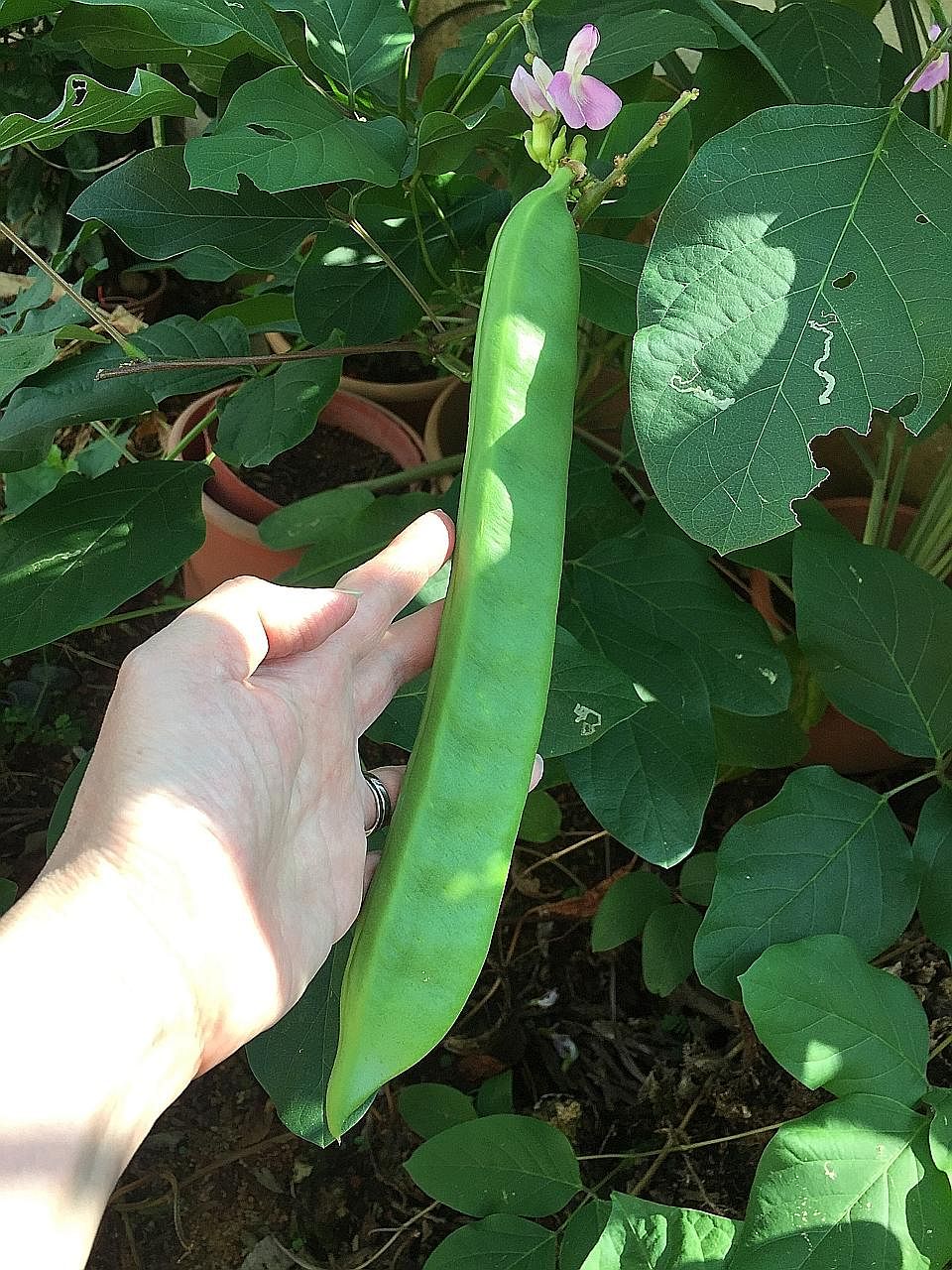
It is best not to eat the plant's mature seeds - they contain a toxin that is difficult to extract.
English ivy thrives in cooler environment
I placed this plant in a shady corridor and water it every day. Some leaves have pale patches. Why is this so?
Linda Loo
The Hedera helix, which is also known as English ivy, is a difficult plant to grow in tropical Singapore as it prefers a cooler climate.
It does better if it is grown in an air-conditioned environment and placed by a bright window where it can get filtered sunlight.
Regarding the pale patches, examine the leaves for spider mites, a common pest of this plant.
To manage the pests, spray a diluted solution of neem oil or summer oil to suffocate them.
Repeated applications are usually needed to ensure that all pests have been eradicated. Follow closely the instructions on the labeland spray the oil during the cooler part of the day.
Leaves of Holy Basil used in cooking
What is the name of this plant and are its leaves edible?
Lily Lim
The plant is likely to be the Holy Basil, also known as Tulasi. Its botanical name is Ocimum tenuiflorum. There are several cultivars that have differing leaf colours.
The plant is considered a holy plant by Hindus and used in ayurvedic medicine, a system of medicine developed in India.
Its leaves are used in Thai cooking.
The annual prefers to grow under direct sunlight and needs a well-drained growing media to thrive.
When grown in soil that is always wet, it tends to succumb to disease. Grow it in a sheltered location, where it is kept out of the rain, but still able to get plenty of sunlight.
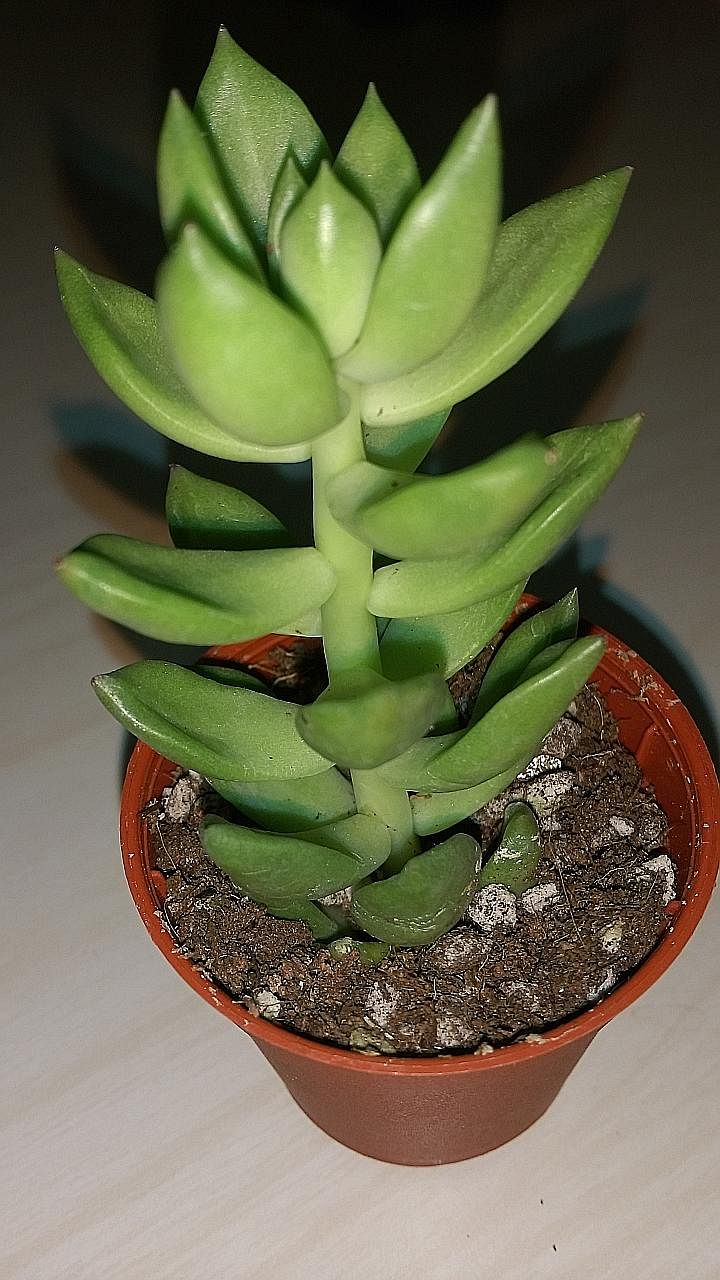
Lanky plant indicates insufficient light
What is the name of this plant ? How do I take care of it?
Lin Meixiu
It is likely to be a species of Sedum and is probably the Sedum nussbaumerianum, which is commonly known as the Coppertone Stonecrop.
This drought-tolerant plant prefers to be grown under direct sunlight and in a well-drained media that consists of coarse materials such as pumice and expanded clay pellets.
A lack of light is the likely reason your plant looks green and is lanky. Under optimal light conditions, the plant will be more compact, its leaves growing in a tight cluster with a reddish-brown tinge.
Shelter the plant from heavy rain, but make sure it gets at least four hours of direct sunlight daily.
Filtered sunlight for money plant, Coleus
What is wrong with these plants? The leaves of the money plant have turned yellow, while the leaves of the other plant have lost their bright shade and dropped. The second plant, however, bears flowers often. Both are placed in the balcony, where there is direct sunlight and which can get windy sometimes.
Clara Teo
The money plant (Epipremnum aureum) appears to be slightly sunburnt.
This plant prefers to be grown in a cooler and more shaded spot. Exposing it to four to six hours of filtered sunlight every day is enough.
Keep the plant evenly moist - it should not be allowed to dry out totally. Protect it from wind too.
The other plant is commonly known as the Coleus. Its botanical name is Solenostemon scutellarioides.
There are many cultivars with varying leaf shapes, sizes and colours.
The plant prefers direct sunlight for vivid leaf colouration and a more compact growth habit.
However, sunlight seems to stress the plant, which causes it to flower. Hence some people grow it under filtered sunlight.
This plant is quite thirsty, so grow it in a larger pot filled with a soil mixture that is moisture-retentive, but also well-drained.
Excessive shade and high soil moisture can cause the plant to die from root rot.
Protect it from wind so that it does not dry out.
• Answers by Dr Wilson Wong, a certified practising horticulturist and founder of Green Culture Singapore (www.greenculturesg.com). He is also an NParks-certified park manager.
• Have a gardening query? E-mail it with clear, high-resolution pictures of at least 1MB, if any, and your full name to stlife@sph.com.sg
